Some of the most dangerous wasps in the world in the US. Humans stung by these wasps are often left in excruciating pain.
The Tarantula Hawk is one of the most dangerous wasps in the world. Found in the US, it kills tarantulas and it’s responsible for high painful reactions when it stings people.
There are a few common species of dangerous wasps in the US. It’s best to know which wasps are the most dangerous as this can be a lifer or death issue.
Table of Contents
What Makes Wasps Dangerous?
Certain characteristics make some wasps more dangerous than others. The sting, the venom, and even their aggression are all signs of dangerousness.
A painful sting
A painful sting is the most dominant factor in assessing dangerous wasps. Pain can be subjective but it can also be measured, especially when compared.
The Schmidt sting pain index is a comparison of the pain associated with the sting of multiple common insects. It classifies a type of wasp as the most painful sting.
The venom of the sting
The venom of the sting can cause serious reactions. Many of these reactions require medical attention.
One of the factors which make the wasp sting so painful and dangerous is that venom can be injected multiple times. Bee stinger gets stuck in the skin when the bee stings humans. Wasps can sting people and prey multiple times without their stinger getting stuck.
Deadly on humans
The venom of some wasps may be deadly to humans. Mandaratoxin is a neurotoxin associated with high pain that’s found in some of the most dangerous wasps. A single wasp doesn’t have sufficient mandaratoxin to kill a human. But stings from multiple wasps with this neurotoxin are lethal.
Aggression
The aggression levels of wasps differ and it can be an indicator of its dangerousness. Some wasps only have aggressive behavior when they feel under threat, when they are squeezed, or when they feel they need to defend a nest.
Types of social wasps
Social wasps are the most dangerous as they tend to attack in swarms. This happens frequently, especially when it comes to overpowering a perceived larger threat such as birds, humans, and other wasps. Social wasps live in colonies and they defend the nest together.
Commonality
The common occurrence of wasps impacts their perceived dangerousness. Paper wasps are the most common in the US. However, there are many invasive species such as the Asian Hornet that have been seen more and more in the country.
13 Most Dangerous Wasps
The following wasps have been seen as dangerous to humans. They are all found in parts of the US.
1. Pepsis grossa
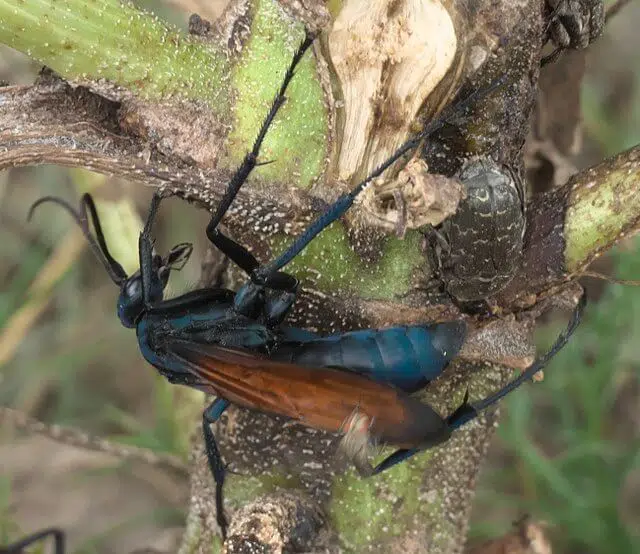
Pepsis grossa or the Tarantula Hawk is known for hunting and killing tarantulas that are often larger.
This wasp is one of the most dangerous and painful to humans. It has the highest rank of pain (rank 4) in the Schmidt Pain Index. This is a comparison pain index for the bites of various insects established by American entomologist Justin Schmidt.
As the largest Tarantula hawk in the US, Pepsis grossa is highly dangerous. Its sting is very painful to humans who are often left without any means to react apart from screaming when stung by the wasp. However, its venom is not very toxic.
2. Warrior wasp
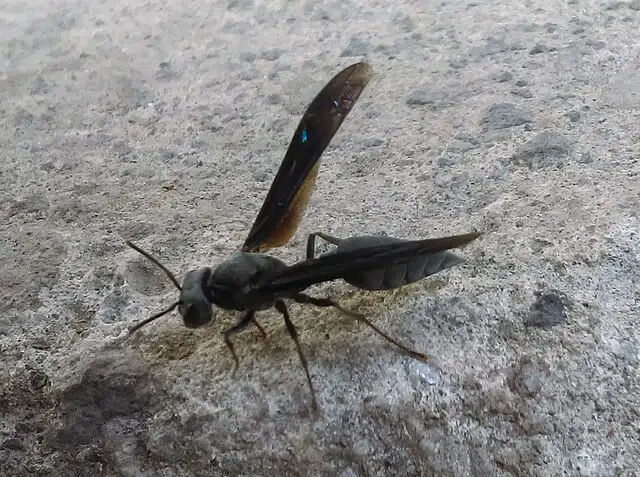
The Warrior wasp ( Synoeca septentrionalis ) also has a very painful sting. Its sting is ranked the highest (rank 4) on the STARR Pain Scale. This is a comparative pain scale established by entomologist Christopher Starr. Only a few other insects have a painful sting.
These wasps are also defensive and aggressive. They have clear patterns to defend against predators. For example, they establish parasite species in their nest by the way they enter and exit it. Warrior wasps have an entry hole and an exit hole in their nests.
3. Thisbe’s Tarantula-hawk Wasp
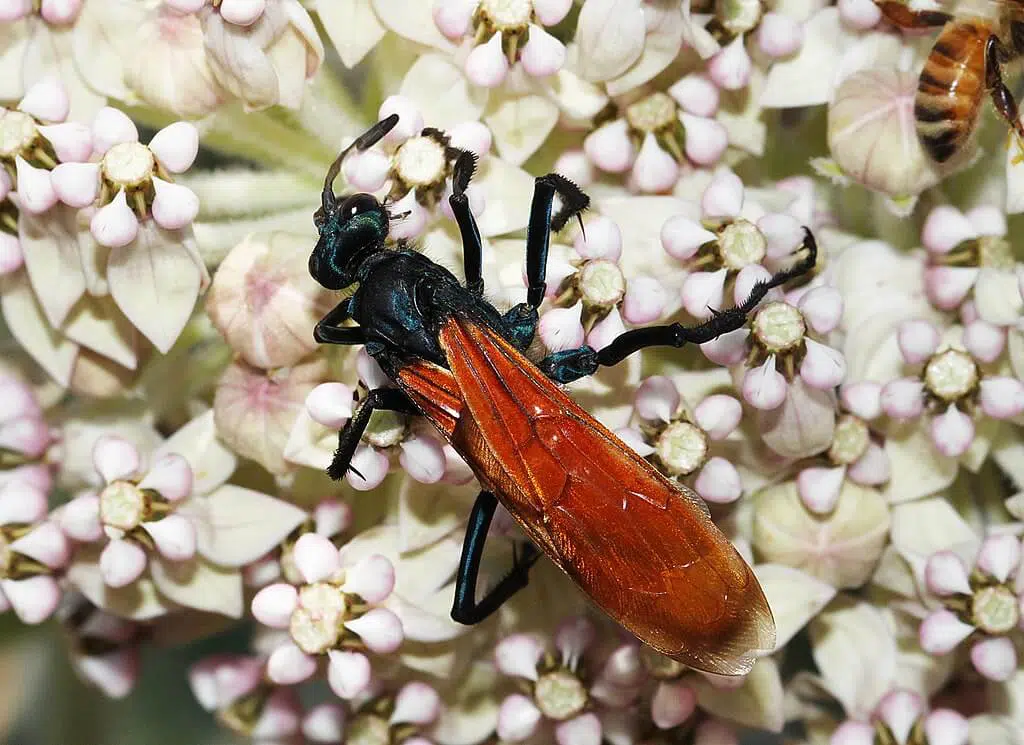
This wasp (Pepsis thisbe) is also ranked 4th by Schmidt’s pain index. It’s only second to the Bullet Ant.
The wasp has a powerful stinger which it uses to paralyze tarantulas in the Grand Canyon. This powerful wasp is among the most common Tarantula Hawks in the US.
This powerful stinger and the large size (up to 2 inches) allows the wasp to have very few natural predators. Roadrunners are among its few predators. Its sting is painful to humans, however.
Scientists confirm humans can’t maintain any type of self-discipline after being stung by this wasp.
4. Milde’s Tarantula-hawk Wasp
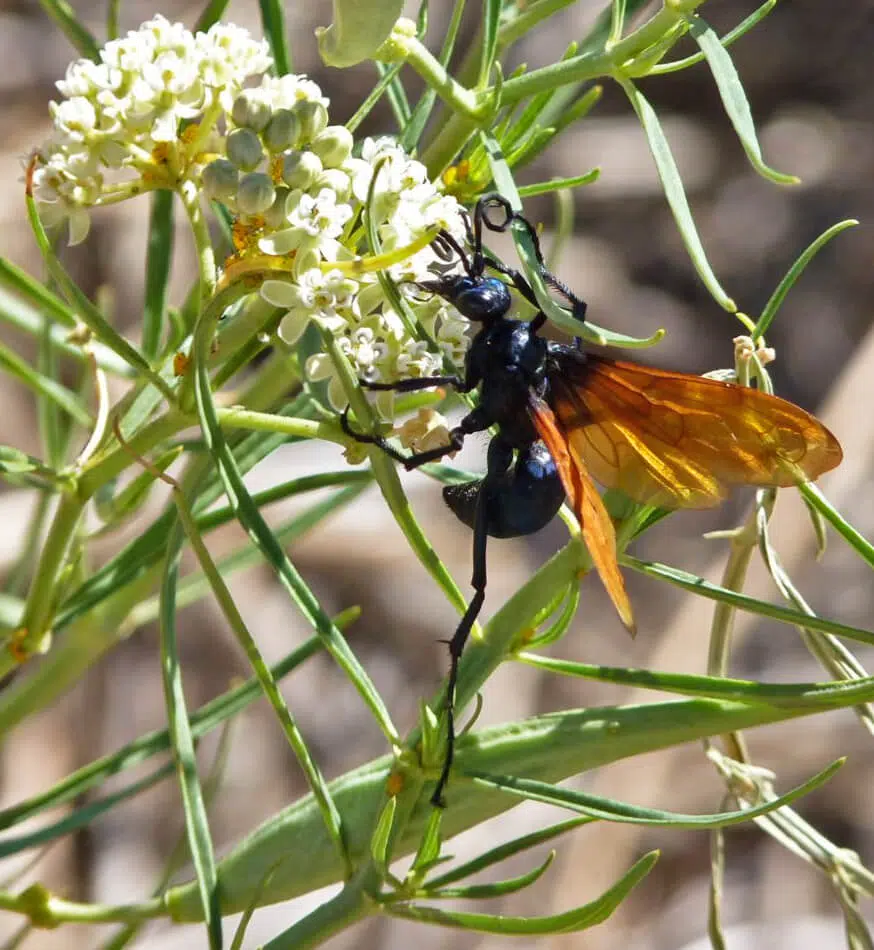
This type of Tarantula hawk (Pepsis mildei) is also known for killing tarantulas. It’s believed it locates tarantulas by smell which is a must since it needs to lay one egg on a tarantula to serve as food.
It’s a rank 4 on the pain index makes it very painful to humans. However, its sting isn’t lethal unless there is an allergy or a certain sensitivity to it.
5. Executioner wasp
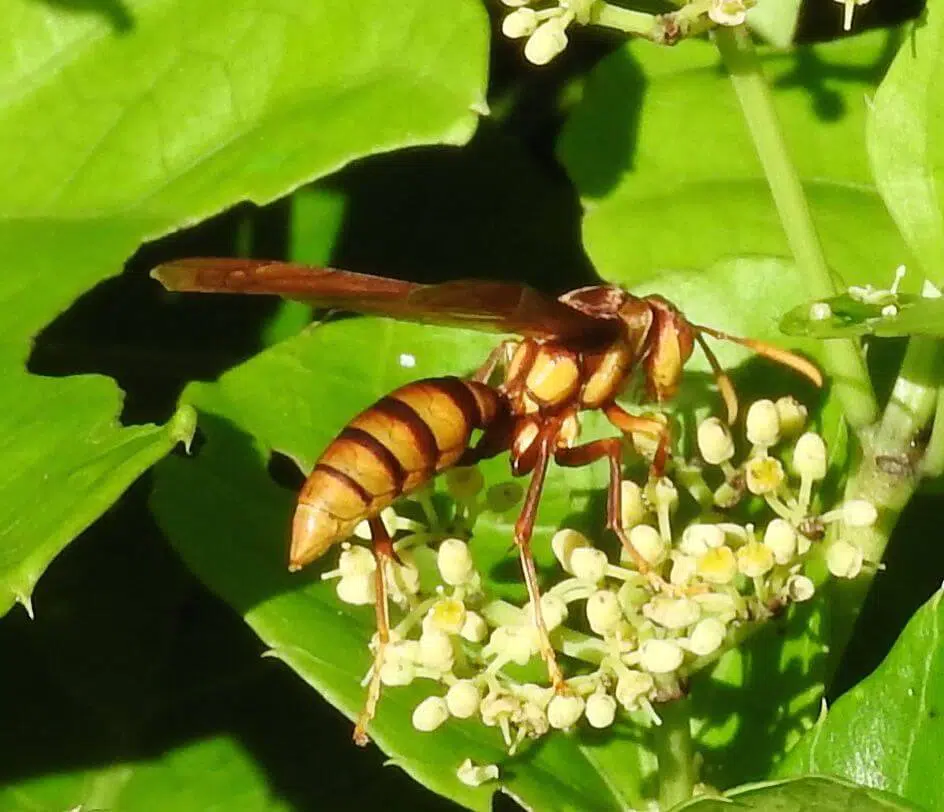
Executioner wasps (Polistes Carnifex) are also a highest rank 4 in Schmidt’s pain index. Its sting is as painful as the sting of the most dangerous wasps. Certain pain experiments have popularized this type of wasp.
People deliberately exposing themselves to the sting of the Executioner wasp describe the pain as equal or higher to the pain inflicted by the Asian Giant hornet’s sting. Its sting isn’t lethal to humans, however.
6. Hemipepsis ustulata
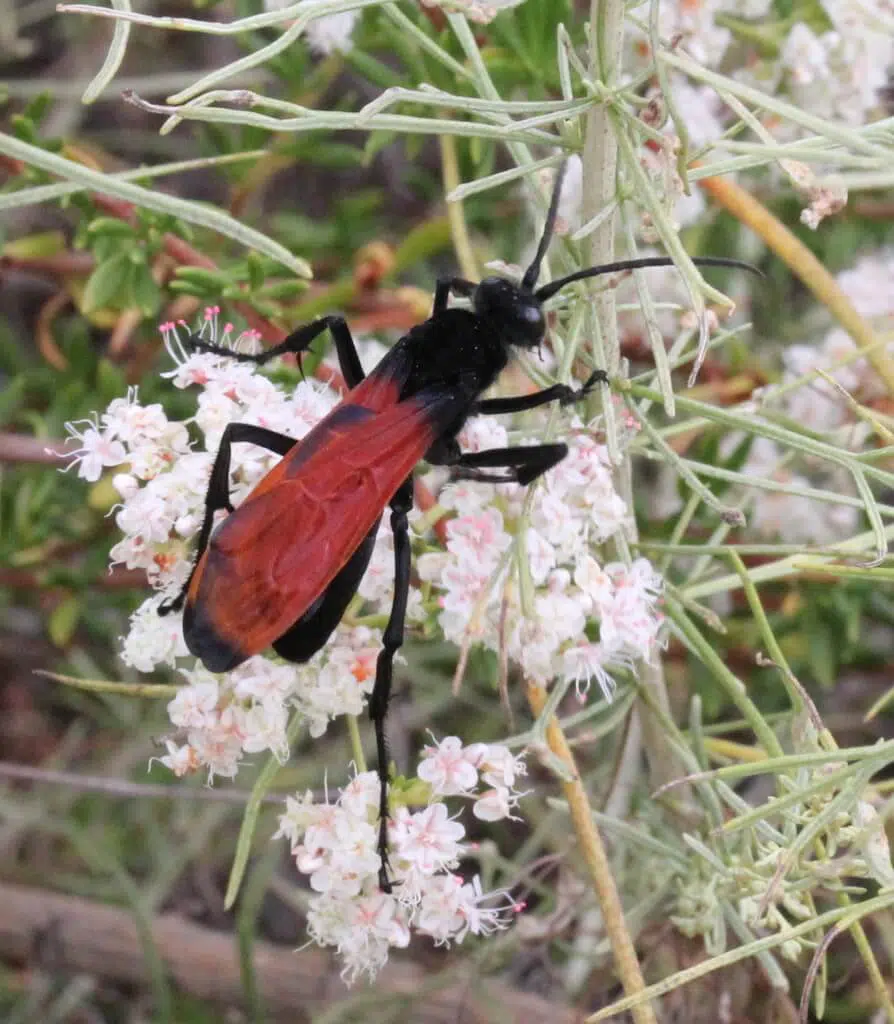
This wasp is also a Tarantula hawk wasp. Its large size allows it to permanently paralyze tarantulas. The pain inflicted when it sting humans is of grade 4 and very painful.
The characteristic of its venom and sting is that that pain is very high for about 3 minutes. It subsides after this period.
7. Red paper wasp
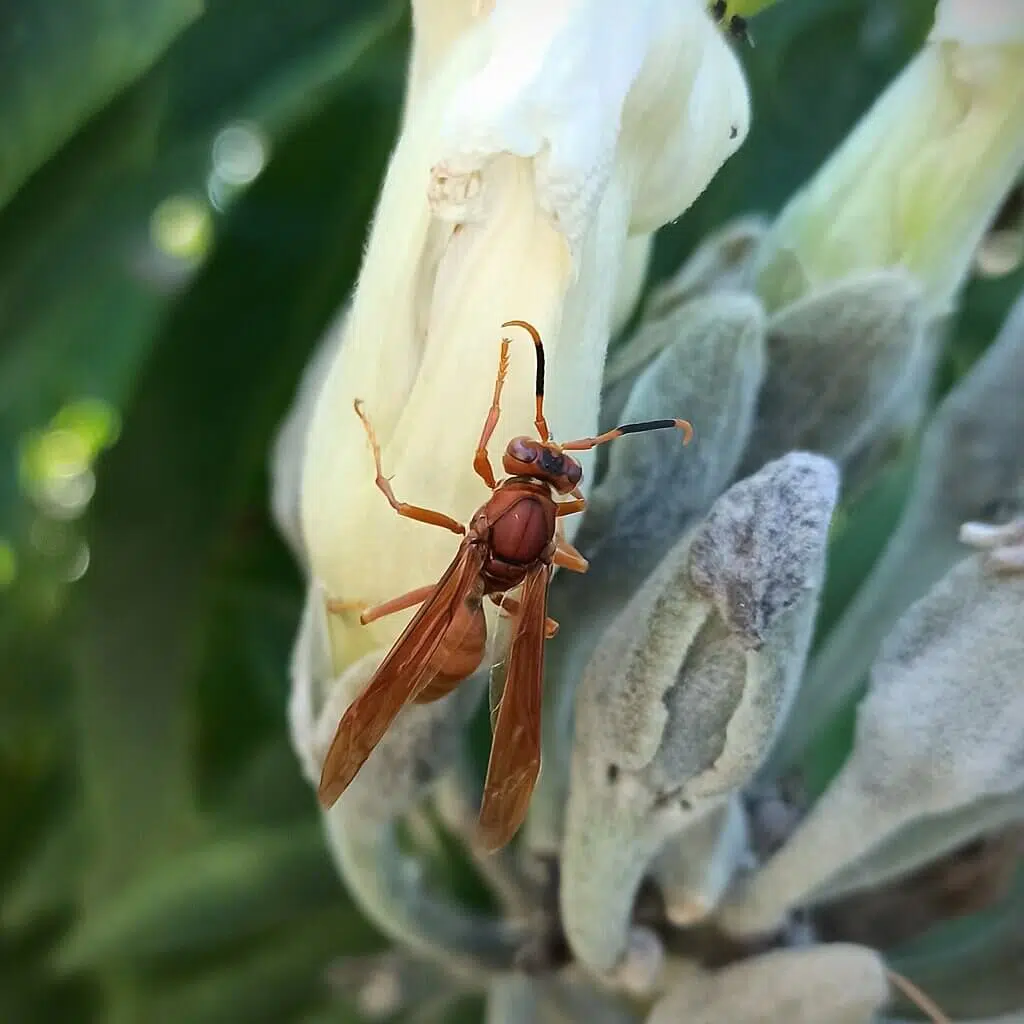
The red paper wasp (Polistes canadensis) is known for its high aggression. The queen wasp exercises her dominance with aggressive behavior, often shaking the abdomen to show superiority towards other female wasps of the colony.
These wasps are social which means they live together and they also sting together. They become very aggressive when they see large predators near the nest when they can release a substance that triggers an alarm to attack the potential intruder.
They rarely use venom on their own as they prefer to attack in groups. The venom and the sting inflict a rank 3-level pain onto humans.
8. Red-headed paper wasp
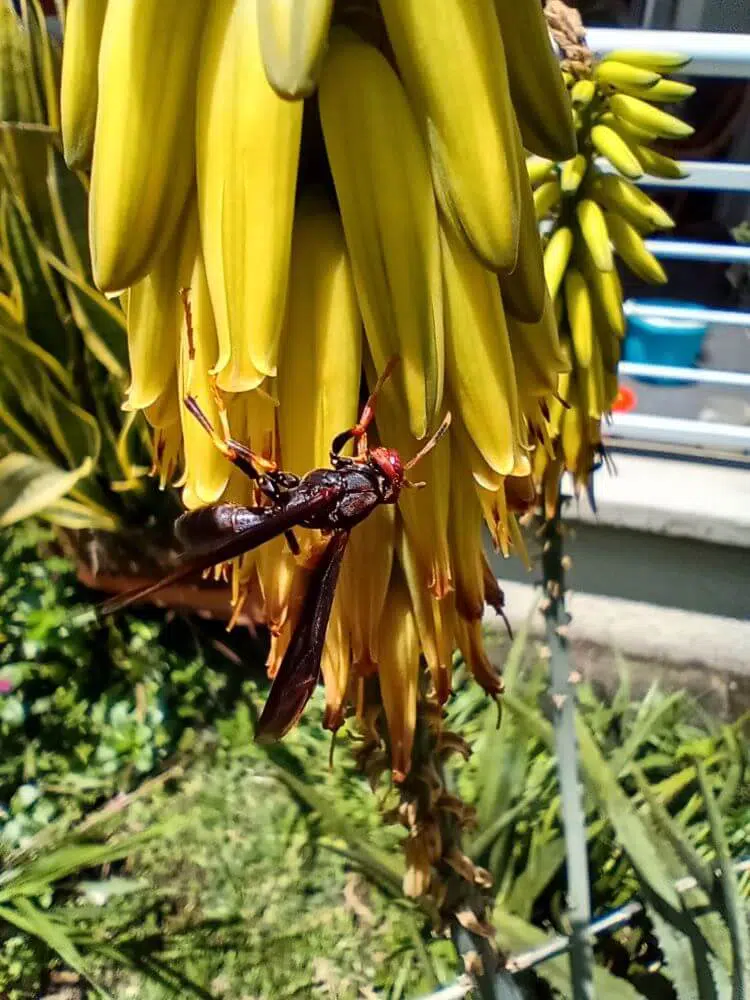
The Red-headed paper wasp’s sting (Polistes erythrocephalus) is very painful. It has a rank of 3 on Schmidt’s Sting Pain Index. These was are very social constructing nests together. They attack all creatures who get in the proximity of the nest, including humans. The sting together as social wasps.
9. Common Eastern Velvet Ant
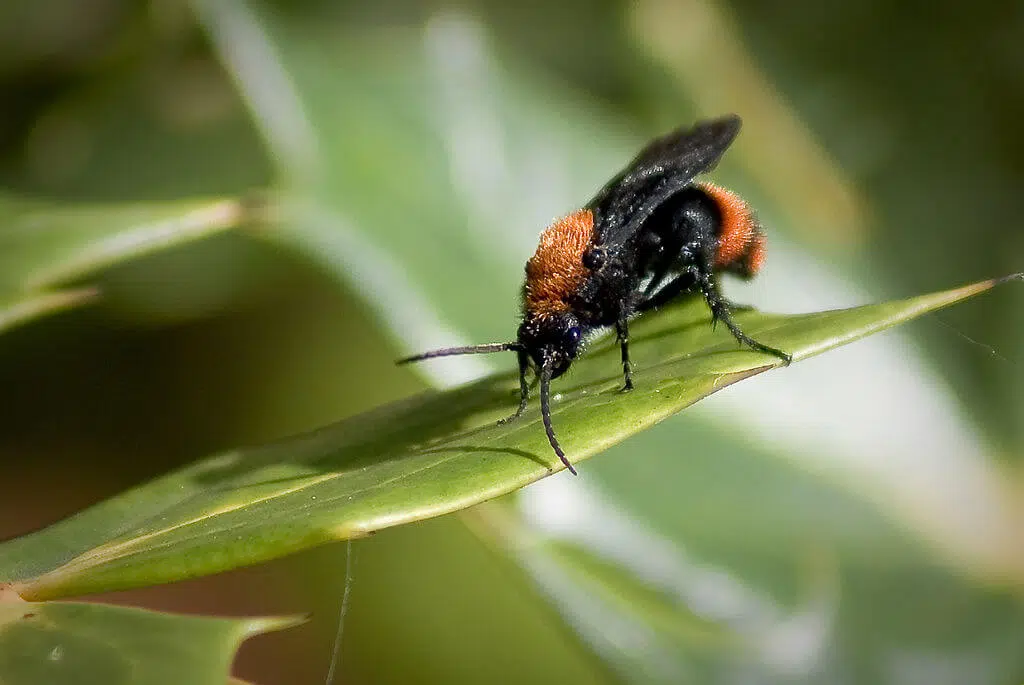
Benefiting from a long stinger, the Common Eastern Velvet Ant’s (Dasymutilla occidentalis) sting is very painful. This is why this wasp is often called a ‘cow killer’. Its sting is a rank 3 category on Schmidt’s Sting Pain Index.
Common in the US, this wasp is known for strong chemical secretion. The female wasp has another defense mechanism which includes making warning sounds.
10. Pacific Velvet Ant
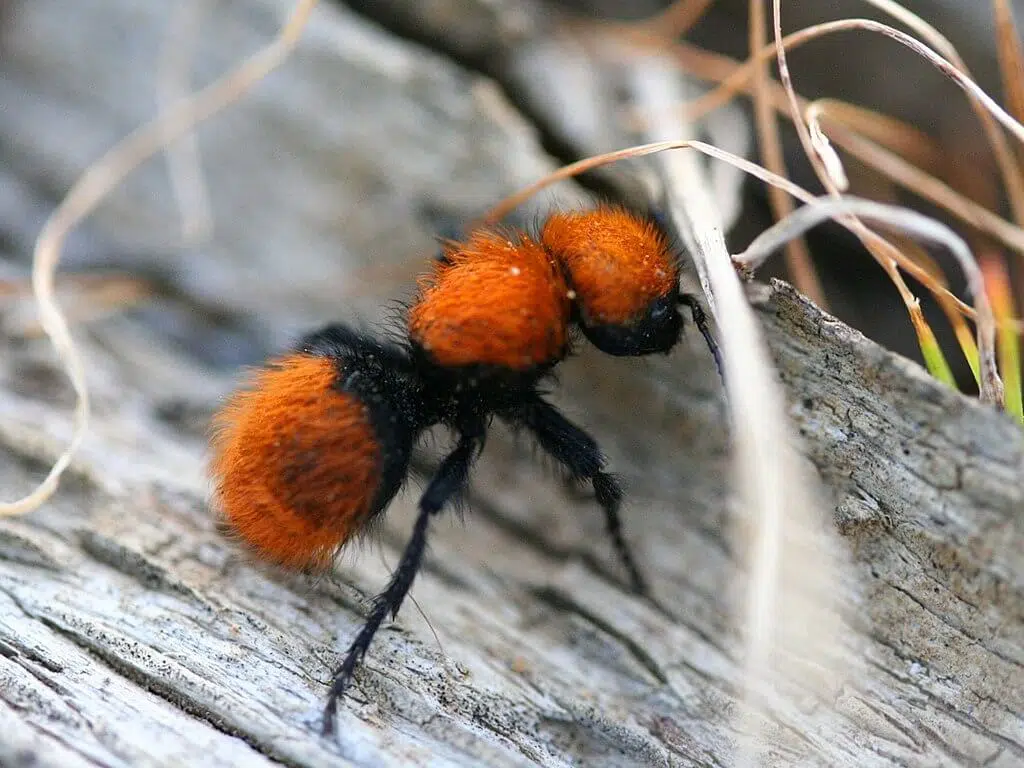
This furry wasp (Dasymutilla aureola) moves quickly on the ground. Characterized by red hairs on the thorax and abdomen, the common US wasp has a very painful bite. It’s a rank 3 sting wasp on Schmidt’s Sting Pain Index.
11. European Hornet
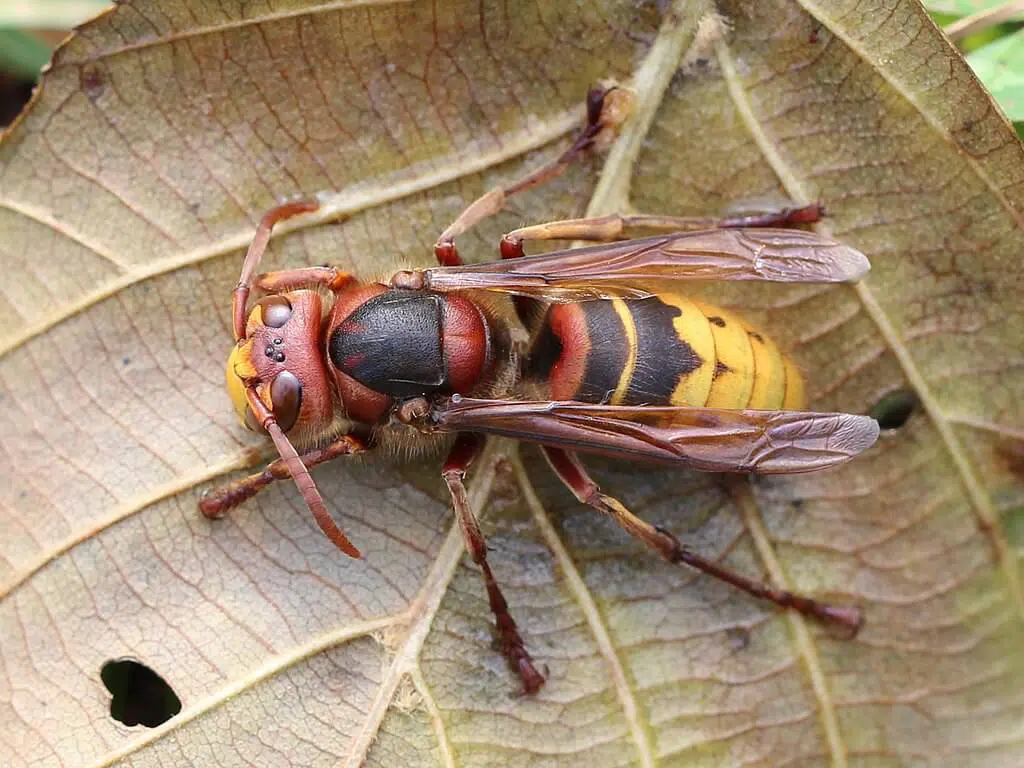
This wasp (Vespa crabro) has a painful sting. People who got stung by the European Hornet show symptoms such as pain in the area of the sting, headaches, shortness of breath, and high heartbeat rate.
Native to Europe, the wasp is now very common in North America. The wasp is aggressive around prey and it also shows aggression when defending its nest. It stings without particular warning signs.
12. Asian giant hornet
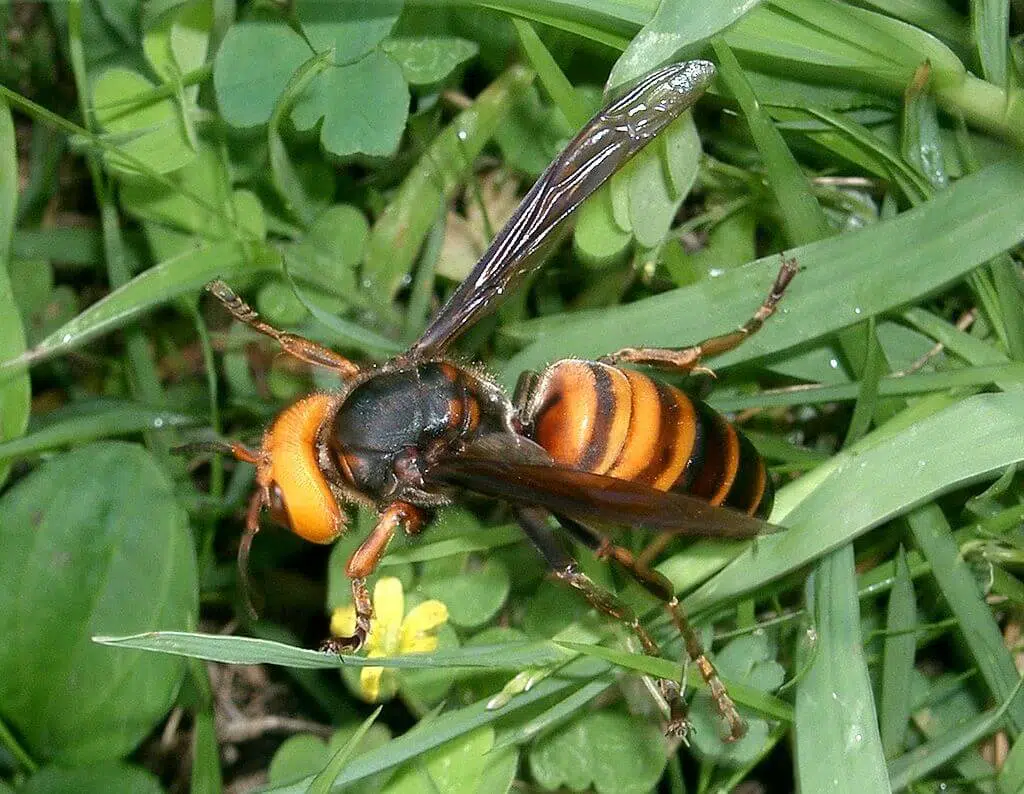
This species of wasp (Vespa mandarinia) is common in South Asia as well as in East Asia territories. It is found in North America in late 2019.
This is the most aggressive wasp, especially when it comes to protecting offspring.
This wasp can sting painfully. While most people don’t need hospitalization following a sting, there’s a small percentage of cases that can go in anaphylaxis, which can be lethal.
13. Yellowjackets
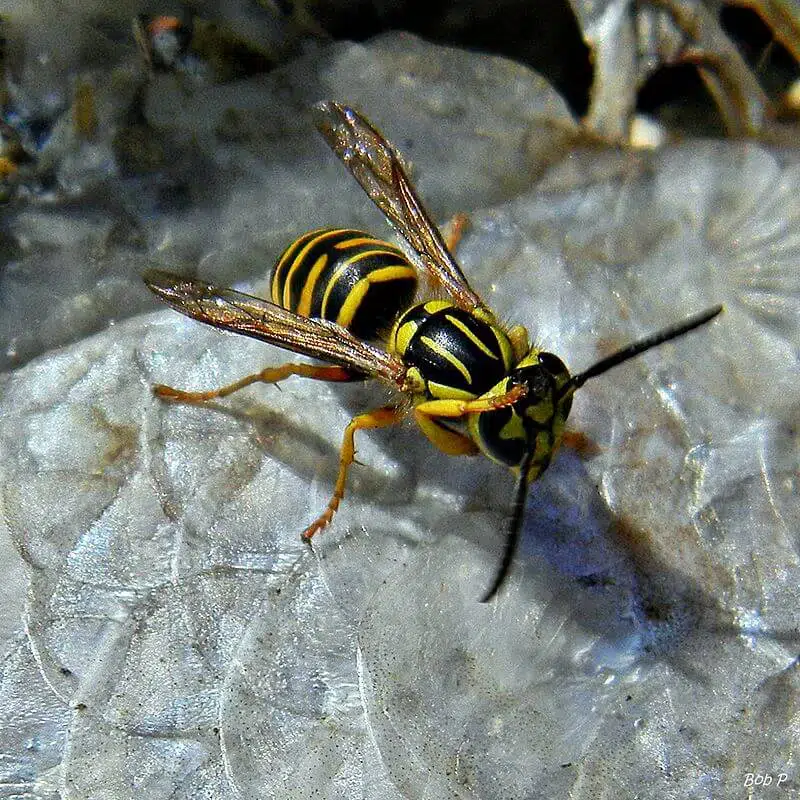
Yellowjacket wasps have a painful sting, a rank 2 on Schmidt’s Sting Pain index. These wasps might not have the most painful sting, but they are responsible for killing most humans.
Common in the US, Yellowjacket wasps have the capacity of stinging multiple times, which means they can insert more venom under the skin.
Furthermore, they attack in swarms. While a single Yellowjacket might not inflict a life-threatening sting, multiple yellowjackets can kill people. Death is caused by anaphylaxis.
There are multiple Yellowjacket wasp species, many of them found in the US:
- The Eastern Yellowjacket (Vespula maculifrons)
- Western Yellowjacket (Vespula pensylvanica)
- Southern Yellowjacket (Vespula squamosa)
- German Yellowjacket (Vespula germanica)
They are all aggressive and they all sting multiple times.
Summary
The most dangerous wasps often sting without warning. They can have aggressive behavior when living in solitude. But they become increasingly life-threatening when they attack in swarms.
Furthermore, the pain associated with the sting of these dangerous common wasps is the most intense compared to the sting of any other insect in the US.